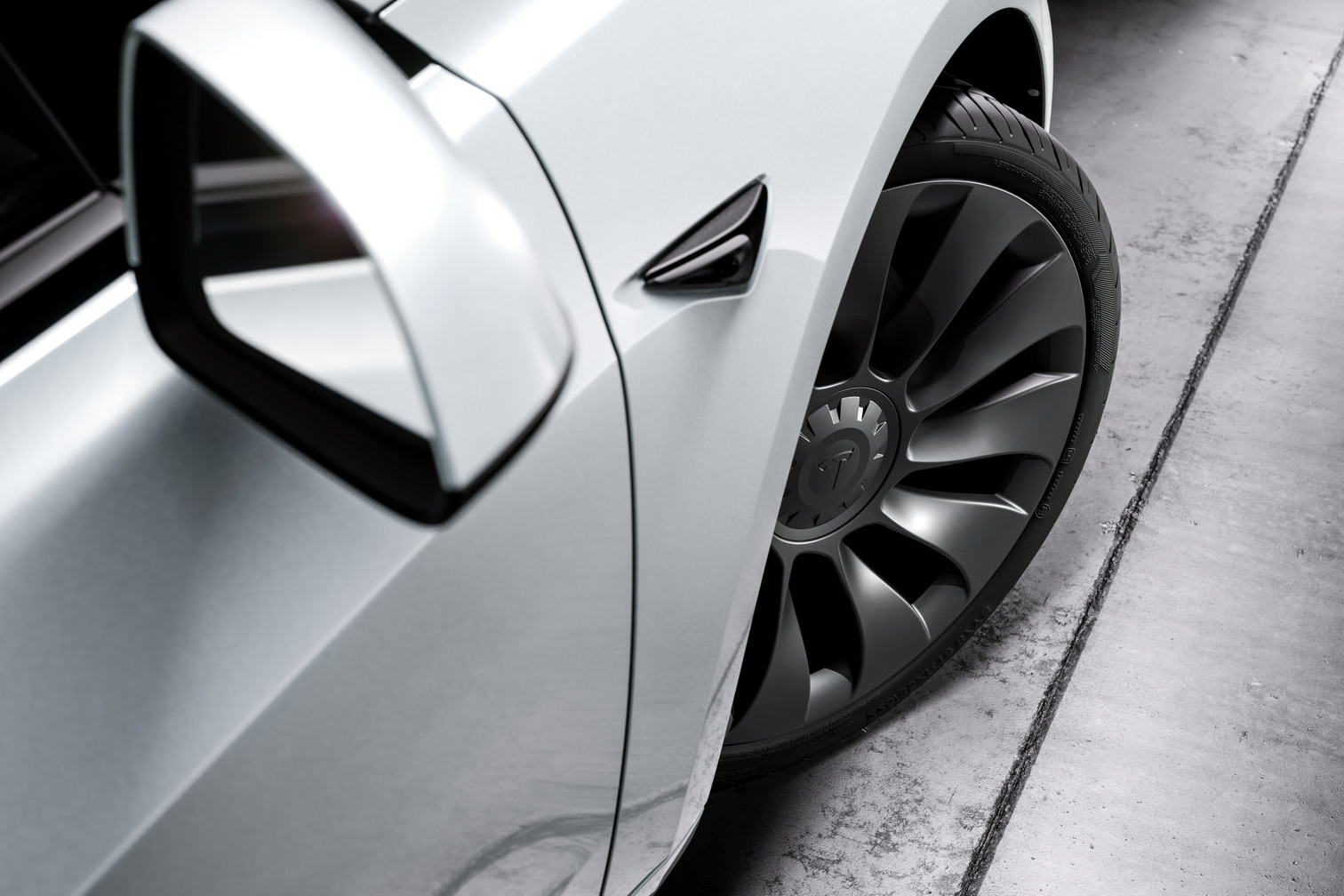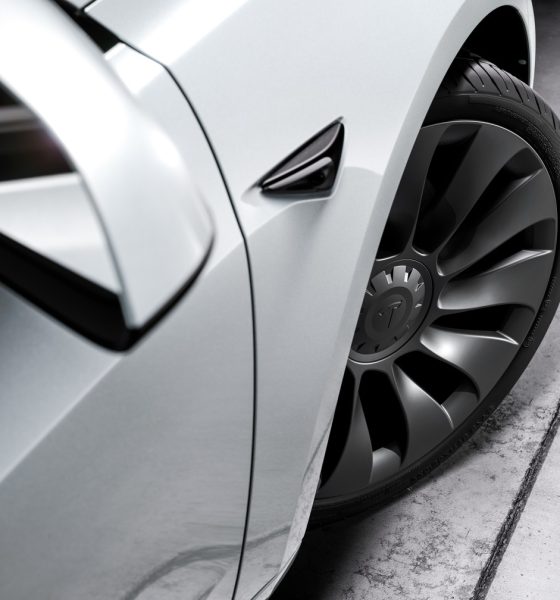Tesla is dominating the electric vehicle sales leaderboard in the United Kingdom through 2021 so far as the company’s Model 3 continues to dominate the highly-concentrated EV market on the continent.
Tesla has been experiencing exponential growth through the past several years thanks to growing demand, improving vehicle quality, world-class EV tech, and its efforts to expand production into other markets across the world. For over a year, Tesla has established international production efforts with its first foreign manufacturing facility in China. The company continues to expand this footprint both domestically and internationally, with plans to open new production facilities in Germany and Austin, Texas, later this year.
In Europe, Tesla currently does not have an operational manufacturing plant as Giga Berlin is still under construction and could begin production in the coming months. However, demand in Europe has been supplemented by the Giga Shanghai plant in China, where Tesla has been exporting Model 3s to Europe since January. As a result of these efforts, Tesla has established itself as the manufacturer with the best-selling EV.
New data from EU-EVs shows that the Model 3 is the European Union’s most popular electric car, and it’s not necessarily a very close race. This year, Tesla has sold 27,186 Model 3 units this year, with the closest competitor being the French-built Renault Zoe, with 17,452 sales so far this year.
Volkswagen holds the 3rd, 4th, and 5th place spots with the ID.3, ID.4, and UP! EV, respectively.
?? European BEV Registrations Year-To-Date 2021
Source: available Information from 11 countries, eu.evsdotcom pic.twitter.com/cAK2zDtmSU
— Alex (@alex_avoigt) June 14, 2021
Because of Volkswagen’s strong performance in the top 5 with its three currently-offered EVs, the German automaker has established itself as the top brand in the EU, accounting for 47,878 sales so far this year. This takes up 18.1% of the total EU market share for electric vehicles, an impressive statistic. Tesla has 27,377 total registrations in the EU as a company, making it the second-most-popular EV manufacturer in the region. This means that Tesla has sold 191 additional non-Model 3 units in the EU due to the sale of Model S and Model X vehicles, most likely.
The Model Y is not currently available in Europe, as Tesla is awaiting the completion of the Giga Berlin production facility. However, there is some speculation that Tesla could begin exporting Model Y units from Shanghai to Europe in Q3 if Giga Berlin isn’t ready for production. However, these rumors have not been confirmed by Tesla directly.
NEWS: @TroyTeslike shared some info on his Patreon from his sources:
1: Tesla will start exporting Model Y from China to Europe in early Q3 2021. The reason that was mentioned was that there is a big MY order backlog in Europe and there are some delays with Giga Berlin
1/5
— Sawyer Merritt ?? (@SawyerMerritt) June 14, 2021
Europe remains a battleground for EV manufacturers as it is one of the most heavily concentrated areas for electric vehicles in the world. However, Tesla has continued to establish itself as the worldwide leader in EVs, with little to no room for competitors to make errors. Tesla seems to improve upon its product on a regular basis, increasing range or performance through its vehicle lineup, giving other companies little room to challenge Elon Musk’s company.

Elon Musk
Elon Musk and Tesla AI Director share insights after empty driver seat Robotaxi rides
The executives’ unoccupied tests hint at the rapid progress of Tesla’s unsupervised Robotaxi efforts.

Tesla CEO Elon Musk and AI Director Ashok Elluswamy celebrated Christmas Eve by sharing personal experiences with Robotaxi vehicles that had no safety monitor or occupant in the driver’s seat. Musk described the system’s “perfect driving” around Austin, while Elluswamy posted video from the back seat, calling it “an amazing experience.”
The executives’ unoccupied tests hint at the rapid progress of Tesla’s unsupervised Robotaxi efforts.
Elon and Ashok’s firsthand Robotaxi insights
Prior to Musk and the Tesla AI Director’s posts, sightings of unmanned Teslas navigating public roads were widely shared on social media. One such vehicle was spotted in Austin, Texas, which Elon Musk acknowleged by stating that “Testing is underway with no occupants in the car.”
Based on his Christmas Eve post, Musk seemed to have tested an unmanned Tesla himself. “A Tesla with no safety monitor in the car and me sitting in the passenger seat took me all around Austin on Sunday with perfect driving,” Musk wrote in his post.
Elluswamy responded with a 2-minute video showing himself in the rear of an unmanned Tesla. The video featured the vehicle’s empty front seats, as well as its smooth handling through real-world traffic. He captioned his video with the words, “It’s an amazing experience!”
Towards Unsupervised operations
During an xAI Hackathon earlier this month, Elon Musk mentioned that Tesla owed be removing Safety Monitors from its Robotaxis in Austin in just three weeks. “Unsupervised is pretty much solved at this point. So there will be Tesla Robotaxis operating in Austin with no one in them. Not even anyone in the passenger seat in about three weeks,” he said. Musk echoed similar estimates at the 2025 Annual Shareholder Meeting and the Q3 2025 earnings call.
Considering the insights that were posted Musk and Elluswamy, it does appear that Tesla is working hard towards operating its Robotaxis with no safety monitors. This is quite impressive considering that the service was launched just earlier this year.
Elon Musk
Starlink passes 9 million active customers just weeks after hitting 8 million
The milestone highlights the accelerating growth of Starlink, which has now been adding over 20,000 new users per day.

SpaceX’s Starlink satellite internet service has continued its rapid global expansion, surpassing 9 million active customers just weeks after crossing the 8 million mark.
The milestone highlights the accelerating growth of Starlink, which has now been adding over 20,000 new users per day.
9 million customers
In a post on X, SpaceX stated that Starlink now serves over 9 million active users across 155 countries, territories, and markets. The company reached 8 million customers in early November, meaning it added roughly 1 million subscribers in under seven weeks, or about 21,275 new users on average per day.
“Starlink is connecting more than 9M active customers with high-speed internet across 155 countries, territories, and many other markets,” Starlink wrote in a post on its official X account. SpaceX President Gwynne Shotwell also celebrated the milestone on X. “A huge thank you to all of our customers and congrats to the Starlink team for such an incredible product,” she wrote.
That growth rate reflects both rising demand for broadband in underserved regions and Starlink’s expanding satellite constellation, which now includes more than 9,000 low-Earth-orbit satellites designed to deliver high-speed, low-latency internet worldwide.
Starlink’s momentum
Starlink’s momentum has been building up. SpaceX reported 4.6 million Starlink customers in December 2024, followed by 7 million by August 2025, and 8 million customers in November. Independent data also suggests Starlink usage is rising sharply, with Cloudflare reporting that global web traffic from Starlink users more than doubled in 2025, as noted in an Insider report.
Starlink’s momentum is increasingly tied to SpaceX’s broader financial outlook. Elon Musk has said the satellite network is “by far” the company’s largest revenue driver, and reports suggest SpaceX may be positioning itself for an initial public offering as soon as next year, with valuations estimated as high as $1.5 trillion. Musk has also suggested in the past that Starlink could have its own IPO in the future.
News
NVIDIA Director of Robotics: Tesla FSD v14 is the first AI to pass the “Physical Turing Test”
After testing FSD v14, Fan stated that his experience with FSD felt magical at first, but it soon started to feel like a routine.

NVIDIA Director of Robotics Jim Fan has praised Tesla’s Full Self-Driving (Supervised) v14 as the first AI to pass what he described as a “Physical Turing Test.”
After testing FSD v14, Fan stated that his experience with FSD felt magical at first, but it soon started to feel like a routine. And just like smartphones today, removing it now would “actively hurt.”
Jim Fan’s hands-on FSD v14 impressions
Fan, a leading researcher in embodied AI who is currently solving Physical AI at NVIDIA and spearheading the company’s Project GR00T initiative, noted that he actually was late to the Tesla game. He was, however, one of the first to try out FSD v14.
“I was very late to own a Tesla but among the earliest to try out FSD v14. It’s perhaps the first time I experience an AI that passes the Physical Turing Test: after a long day at work, you press a button, lay back, and couldn’t tell if a neural net or a human drove you home,” Fan wrote in a post on X.
Fan added: “Despite knowing exactly how robot learning works, I still find it magical watching the steering wheel turn by itself. First it feels surreal, next it becomes routine. Then, like the smartphone, taking it away actively hurts. This is how humanity gets rewired and glued to god-like technologies.”
The Physical Turing Test
The original Turing Test was conceived by Alan Turing in 1950, and it was aimed at determining if a machine could exhibit behavior that is equivalent to or indistinguishable from a human. By focusing on text-based conversations, the original Turing Test set a high bar for natural language processing and machine learning.
This test has been passed by today’s large language models. However, the capability to converse in a humanlike manner is a completely different challenge from performing real-world problem-solving or physical interactions. Thus, Fan introduced the Physical Turing Test, which challenges AI systems to demonstrate intelligence through physical actions.
Based on Fan’s comments, Tesla has demonstrated these intelligent physical actions with FSD v14. Elon Musk agreed with the NVIDIA executive, stating in a post on X that with FSD v14, “you can sense the sentience maturing.” Musk also praised Tesla AI, calling it the best “real-world AI” today.










